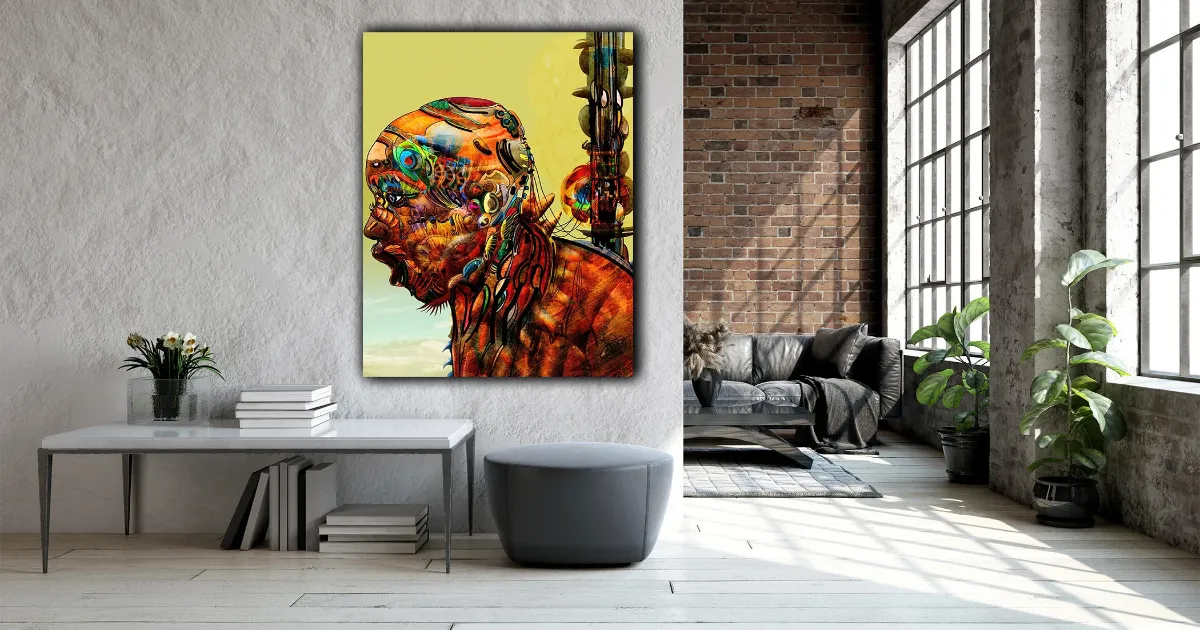Haiti is known for its vibrant and unique art, which can be seen in everything from the country’s architecture to the way its people dress. Traditional Haitian art is a reflection of Haitian culture and history, and it’s something that makes the country special and fascinating.
If you’re interested in learning more about Haitian art or want to add some pieces to your collection, now is the perfect time to do so. Here, in this article, we’ll explore 5 popular traditional Haitian art forms that are sure to captivate and inspire you.
How Has Traditional Haitian Art Evolved Over The Years?
Traditional Haitian art has a long and storied history, dating back to the early days of the country’s settlement. The art has evolved, reflecting the changing needs and values of Haitian society. In this article, we will explore how traditional Haitian art has evolved over the years, and we will look at some of the key factors that have derived its development.
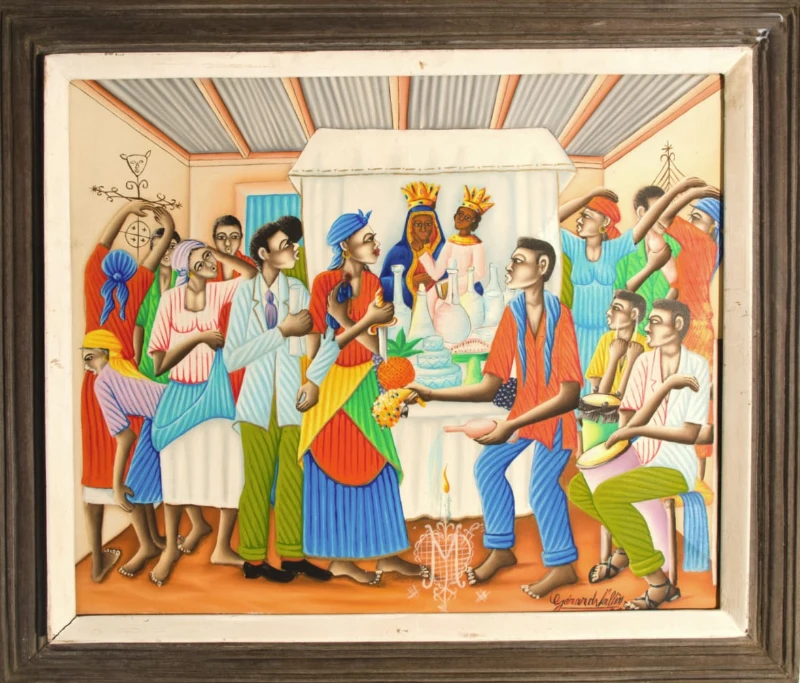
The earliest forms of traditional Haitian art were based on practical needs such as shelter, clothing, and food. These utilitarian objects were decorated with simple designs that reflected the natural world around them. For example, many early everyday Haitian paintings depict scenes from life or images of tropical plants and animals.
As Haiti developed into a more complex society, its artists began to explore new creative avenues. They started to create works that express their unique cultural identity, and they used their art to communicate important social messages. One of the most famous examples of this is paintings showing the hardships of the Haitian people in difficult times.
In recent years, traditional Haitian art has become increasingly popular both inside and outside of the country. Haitian artists are using their work to celebrate their culture and to promote a positive image of Haiti to the world. This new wave of Haitian art is helping to redefine the country’s identity, and it is making a significant contribution to the global art scene.
What Are Some Common Types Of Traditional Haitian Art?
When most people think of Haitian art, the first thing that comes to mind is likely voodoo dolls. However, many other types of traditional Haitian art are just as fascinating and unique. Here, we will explore some of the most common types of traditional Haitian art.
Paintings
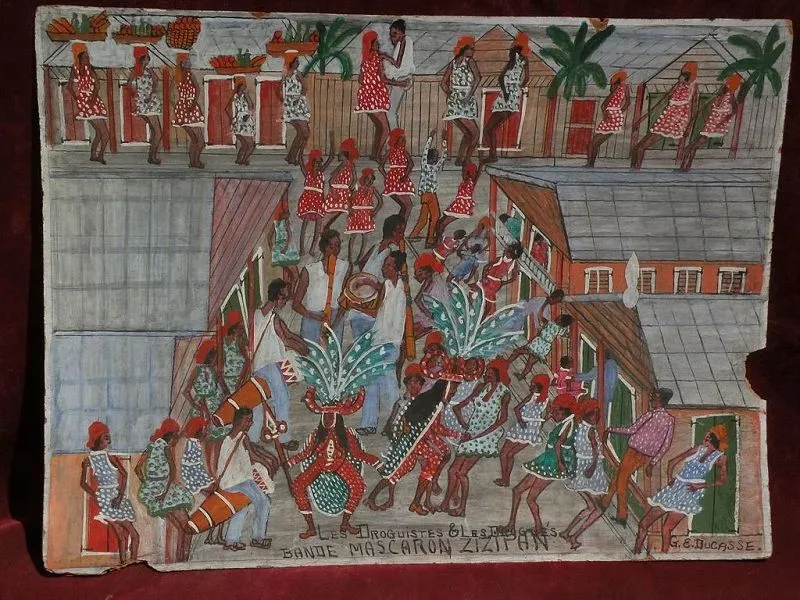
There are many different types of traditional Haitian art, but one of the most popular and renowned is painting. Haitian painting often features bright colors and bold patterns, and it often reflects the country’s Afro-Caribbean heritage.
Traditional Haitian paintings are characterized by their intricate designs. The subject matter of these paintings is often religious, and the paintings are often used as decorations in homes or churches. Some of the most popular traditional Haitian painting subjects include angels, biblical scenes, and saints.
Most traditional Haitian paintings are created using oil paints, although some artists use acrylics or watercolors. The paint is usually applied to a canvas or wooden panel, and the finished work is typically varnished for protection.
Traditional Haitian art is highly prized by collectors, and many of the paintings have been sold for hundreds of thousands of dollars at auction. Some of the most famous Haitian painters include Préfète Duffaut, Antonio Joseph, and Jean-Claude Garoute.
Metal Sculptures
Traditional Haitian metal sculptures are renowned for their intricate designs and beautiful craftsmanship. The art form began in the early 1950s and has evolved over the years to incorporate new techniques and styles.
Most Haitian metal sculptures are made from recycled materials, such as oil drums, wire, and sheet metal. The artists start by sketching their designs on paper. Then they use a variety of tools to create the sculpture. This can include basic hand tools like hammers and chisels, but also more specialized equipment like torches and welding machines.
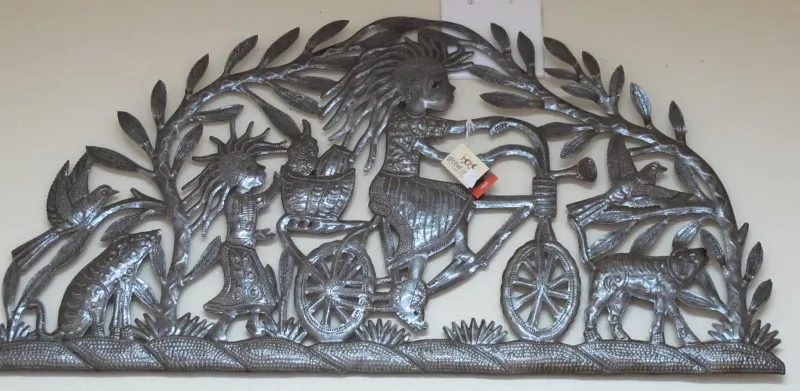
The result is a stunning piece of art that tells a story or captures a moment in history. Many of the sculptures depict traditional Haitian life, while others are more abstract. Whatever the subject matter, all Haitian metal sculptures are incredibly detailed and beautifully crafted.
Wooden Sculptures
The history of Haitian art is a long and rich one, dating back to the early 1800s. One of the most iconic forms of Haitian art is a wooden sculpture. This type of sculpture is unique to Haiti and is known for its bright colors and intricate designs.
Wooden sculptures are typically carved from mahogany or cedar wood and are painted in vibrant colors. The most common designs are floral motifs, animals, and scenes from Haitian life. Many of these sculptures are religious and depict images of saints or biblical figures.
The artists who create these sculptures are highly skilled craftsmen, and their work is greatly appreciated by collectors and art lovers around the world. Wooden sculptures from Haiti are a beautiful embodiment of the country’s culture and heritage and are sure to be a conversation starter wherever they are displayed.
Flag Art
Flag art has been popular throughout the world for centuries, and Haiti is no exception. Sequin flag art is a traditional Haitian art form that uses colorful sequins to create beautiful and intricate designs.
The history of sequin flag art in Haiti is a long and storied one. It is believed that the tradition originated with the Maroons, a group of escaped slaves who lived in the mountains of Haiti. The Maroons were known for their vibrant and elaborate clothing, which was often decorated with sequins.
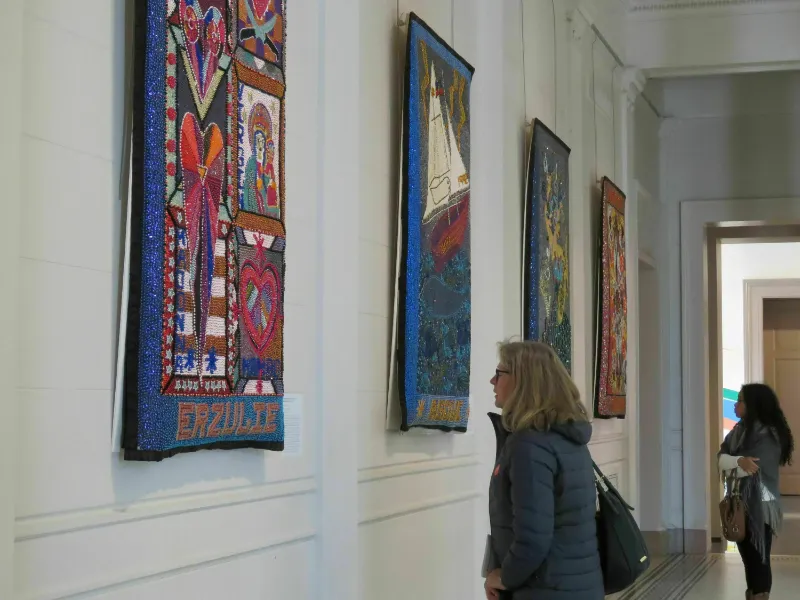
Today, sequin flag art is a staple of Haitian culture. It can be found at street markets and in artisanal shops throughout the country. The most skilled artists can create stunning works of art using nothing but sequins and thread.
Sequins are a challenging medium to work with, but the results can be breathtaking. The colors and patterns are so vibrant that they almost seem to come to life. In many ways, sequin flag art is the perfect embodiment of Haitian culture: bright, colorful, and full of life.
Crafts
One of the most well-known forms of Haitian art is its traditional crafts. These crafts are typically made from materials that are readily available in Haiti, such as bamboo, clay, straw, and wood.
One popular type of Haitian craft is baskets. Baskets can be made in a variety of shapes and sizes and are often used to store food or other belongings. Many Haitians weave baskets using a technique called “pate de coque.” This technique involves weaving strips of bamboo or straw together to form a mesh-like pattern.
Another common Haitian craft is pottery. Pottery is made from clay that is found near the Port-au-Prince area. Potters use a variety of methods to create their pots, including hand-forming the clay, using molds, and firing the pots in a kiln. Pottery is often decorated with intricate designs, which can vary from one region to another.
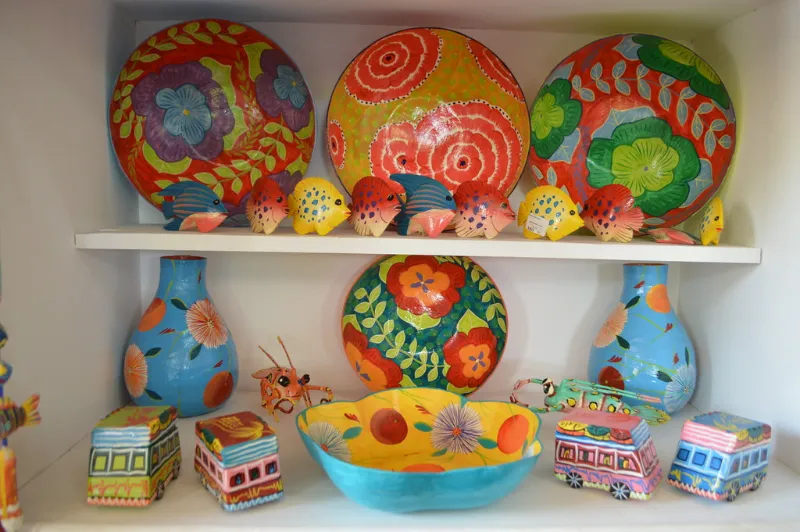
Haitian crafts are known for their vibrant colors and intricate designs. They are popular souvenirs for tourists and have been exhibited in museums around the world. If you’re interested in purchasing some Haitian crafts, be sure to visit one of the many art markets in Haiti. You’re sure to find something that catches your eye!
Why Haitian art is so unique
There is no one quite like Haitian artists when it comes to creating visually stunning and emotionally powerful pieces of art. While their work is often inspired by their religious and cultural traditions, it is also infused with unique modernity that makes it stand out from the rest. Here are just a few reasons why Haitian art is so special.
It Blends Traditional And Modern Elements
One of the most fascinating things about Haitian art is the way that it blends traditional and modern elements. On the one hand, you have pieces that are heavily influenced by African and Caribbean cultures, with bright colors and intricate patterns. On the other hand, many artists use more contemporary styles and techniques. This combination of old and new makes Haitian art unique and extremely interesting to look at.
It Often Tells Stories Of Haitian History And Culture
Another thing that sets Haitian art apart is the way that it often tells stories. Many pieces incorporate religious or historical themes, and they can be a great way to learn more about Haitian culture. Additionally, many artists use their work to express their personal views and experiences, which helps give viewers a unique insight into life in Haiti.
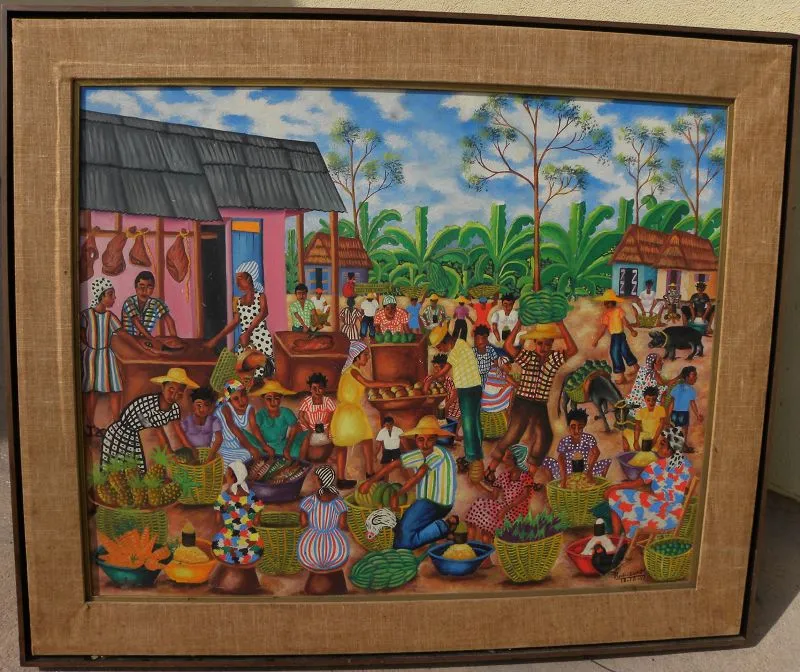
Haitian Artists Often Use Vodou Symbolism In Their Work
One of the things that make Haitian art so unique is how Vodou’s symbolism is often incorporated into the works. This religious tradition has a long and complex history in Haiti, and artists have found ways to incorporate its iconography and themes into their work in various ways.
Some pieces are overtly religious, while others are more subtle. But regardless of how it’s done, this incorporation of Vodou into Haitian art provides a distinctive look and feel that is uniquely Haitian.
Haitian art is worth taking a closer look at. The mix of traditional and modern elements makes for some truly unique pieces, and the stories that they tell offer a fascinating glimpse into Haitian culture. If you get the chance to see some Haitian art in person, be sure to take it!
The Symbolism Behind Popular Traditional Haitian Art Motifs
Haitian art is rich in symbolism, often with deep spiritual meaning. Many of the popular motifs and designs found in traditional Haitian art have a long history and are steeped in religious tradition.
One common motif is the “danse macabre,” or dance of death. This image features skeletons or corpses dancing together, sometimes with a devil or other figure presiding over the scene. The dance of death symbolizes the universality of death and the transient nature of life. It reminds us that everyone, regardless of status or wealth, will eventually die.

Another popular motif is the “mambo” or voodoo priestess. This figure is often depicted with her arms outstretched, holding a snake in each hand. The mambo is a powerful symbol of female spirituality and strength. She represents the power of nature and the divine feminine.
Other common symbols found in Haitian art include crosses, spirits, angels, and demons. Each has its unique meaning and story behind it. Ultimately, these images reflect the complex spiritual traditions of Haiti and the importance of religion in daily life.
About Voodoo Belief In Haiti And How It Affects The Art
The history of Voodoo in Haiti is a long and complicated one. The religion is believed to have originated in West Africa and was brought over to Haiti during the slave trade. Voodoo is a mix of African religions, Roman Catholicism, and Native American beliefs.
Voodoo is practiced by many Haitians today. Religion is believed to offer protection and guidance and is used to cure illness and solve problems. Voodoo ceremonies are often elaborate, involving music, dance, prayer, and sacrifice.
Voodoo plays an important role in Haitian culture and society. The religion is deeply rooted in Haitian history and traditions and has a significant impact on the daily lives of Haitians.
The traditional art in Haiti is heavily influenced by the Voodoo religion. This spiritual practice is followed by the majority of Haitians and is a blend of African and Catholic beliefs. Voodoo is centered around the idea of spirits known as loa, who can inhabit objects, animals, or people.
These spirits can be helpful or harmful, and followers of Voodoo often seek their guidance or protection. Many of the traditional art forms in Haiti depict loa in some way, often as part of a religious ceremony or ritual.
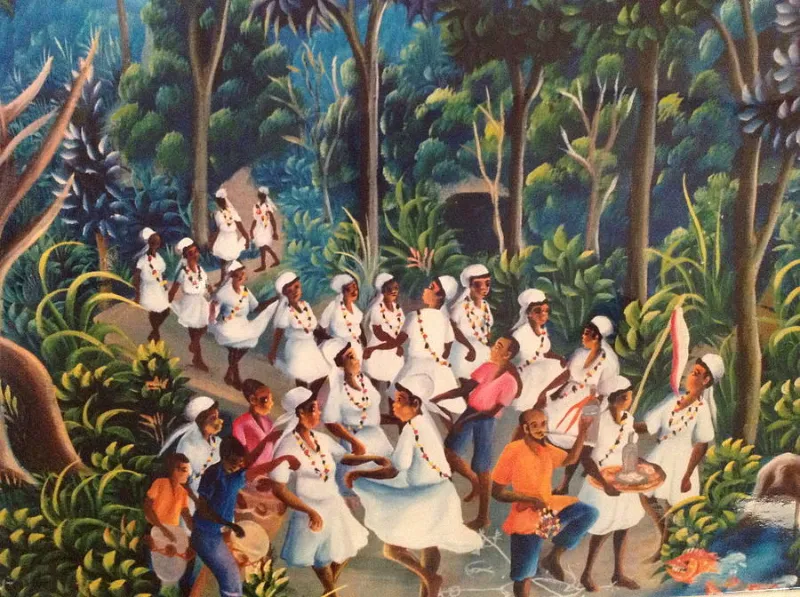
One common type of Haitian art is called “Vodou flags.” These flags are made from cloth and are often decorated with symbols or images related to Voodoo. They are used in religious ceremonies to summon the loa and can be quite elaborate and colorful.
Another common form of Haitian art is “paintings on the tin.” This type of painting involves painting images onto pieces of metal using a special paint that will not rust.
The paintings are often scenes from everyday life or religious ceremonies. They are considered to be quite sacred and are used to educate people about Voodoo culture and beliefs.
FAQs
What Is The Difference Between Haitian And African Art?
There are a few key distinctions between Haitian and African art. While the two styles share some similarities, Haitian art is typically characterized by bright colors and bold patterns, whereas African art is more likely to be made from natural materials like wood or stone and features more subtle colors and shapes.
Additionally, Haitian art is often closely associated with the Vodou religion, while African art does not typically have a religious significance. Also, Haitian art is often about celebrating the beauty of everyday life, while African art often serves as an important cultural tradition or storytelling tool.
How Has Haitian Art Been Influenced By Its History?
The Haitian Revolution was a successful slave revolt that took place in the French colony of Saint-Domingue (now Haiti) from 1791 to 1804. It is considered the most successful slave uprising in history. The rebels, led by Toussaint Louverture, eventually freed all of the slaves on the island and founded an independent republic.
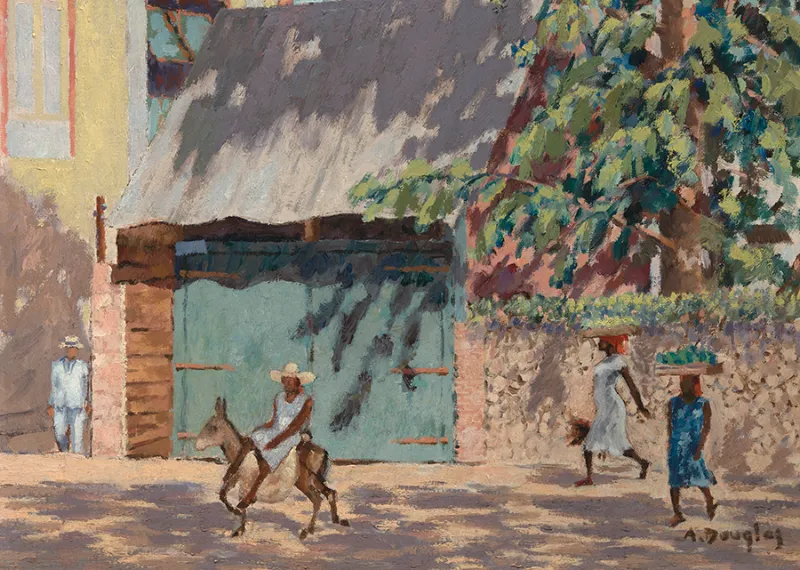
The art of Haiti has been greatly influenced by its tumultuous history. Many of the country’s artists have used their work to express their opposition to slavery and oppression, as well as their hope for a better future. In addition, Haitian art is often characterized by its bright colors and unique folkloric elements.
Why Is Haitian Art So Popular?
Haitian art is popular because of its striking and unique style. The bright colors, intricate patterns, and folkloric images create a look that is instantly recognizable and highly sought after by collectors. Haitian artists also often use recycled materials in their work, which gives their pieces an extra layer of meaning and adds to their appeal.
In addition, Haiti has a long history of producing art that speaks to the country’s unique culture and experiences, and this has helped to make it one of the most well-known and respected forms of art in the world.
How Do I Know If A Piece Of Haitian Art Is Authentic?
When looking for Haitian art, it is important to be aware of how to authenticate the piece.
- You should ask the artist where the piece came from. If they cannot tell you, it is likely not authentic.
- You can look at the materials used in the art. If it is made with recycled materials, it is likely not authentic.
- You can research the artist and compare their work to other pieces by them. If the work is not consistent with their other pieces, it is likely not authentic.
- You can also look at the price of the piece. If it is too cheap or too expensive, it is likely not authentic.
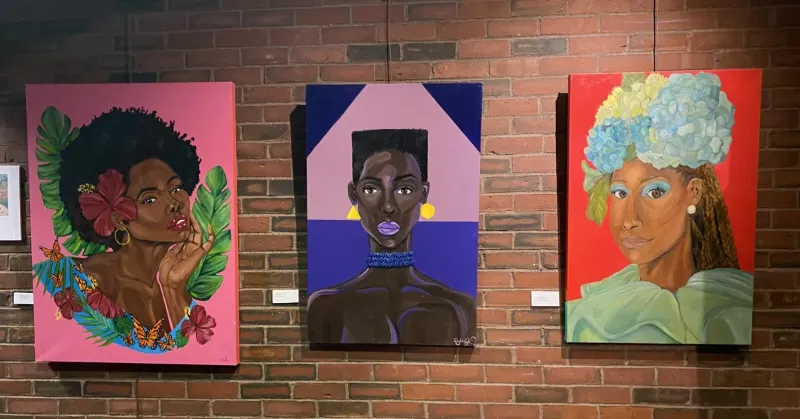
Where Can I Buy Haitian Art?
If you’re looking for beautiful and unique Haitian art, there are several great places to find it. One of the most popular places to buy Haitian art is on some famous websites. There, you’ll find a wide variety of pieces from talented artists, all of whom are from Haiti. You can also find Haitian art in galleries and art shows throughout the country.
If you’re looking for a more personal experience, you can also visit the artists themselves in their studios. Many of them are happy to show you their work and discuss their techniques. This is a great way to learn more about Haitian art and the culture behind it.
No matter where you choose to buy Haitian art, you’re sure to find something that catches your eye. The vibrant colors and intricate designs make these pieces truly special.
How Can I Learn More About Haitian Art?
There are a few ways to learn more about Haitian art. One way is to attend an exhibit of Haitian art. This will allow you to see a variety of pieces from different artists.
Another way to learn more about Haitian art is by reading books or articles about it. This will give you a better understanding of the history and culture behind the art.
A third way to learn more about Haitian art is by watching documentaries or videos about it. This will allow you to see how the art is created and what its purpose is.
Lastly, you can also talk to experts on Haitian art who can provide you with more in-depth information.
Conclusion
The vibrant and intricate artwork created by the Haitians is a reflection of their rich culture and heritage. The artists use bright colors and bold patterns to depict scenes from everyday life, as well as traditional legends and stories. While much of this art is created for religious ceremonies or personal enjoyment, there is a growing demand for it in the global market.
As the world becomes more connected, traditional Haitian art is being appreciated by a wider audience.

